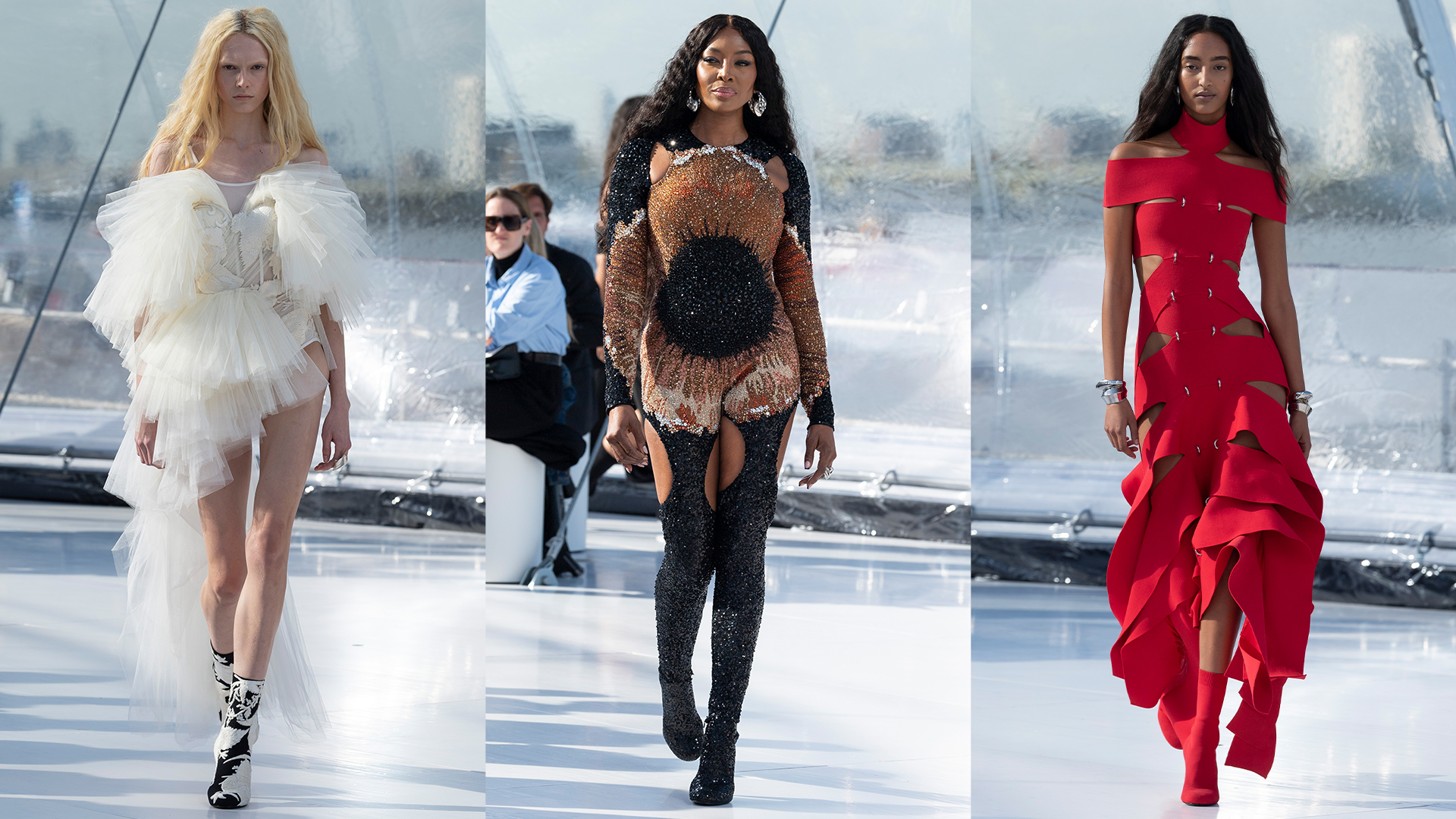For the last few seasons, Alexander McQueen has chosen to show in London and New York, outside of the traditional fashion schedule. Though the house will return to Paris next season, presumably on the official schedule, its British-based shows have offered an opportunity for McQueen to explore its roots with shows set in parts of London that juxtapose the historical gravitas of ye olde buildings with its modern skyscrapers. This time, it was the vast grandeur of Greenwich’s Old Royal Naval College and its colonnaded buildings. Apparently Les Mis was filmed here. It’s a prime period costume-drama setting from one angle — but turn around and you’ll have a domineering view of London’s concrete-and-glass financial district from across the Thames. Somewhere in the middle was the giant inflatable cloud designed by Chilean architect Smiljan Radić, in which McQueen’s last London show took place.
It’s a show space that is designed to be reusable, which is an apt metaphor for the house itself — here, the codes laid by founder Lee McQueen are perennially reinvented by Sarah Burton: motifs from nature, razor-sharp tailoring, sculpted leather bodices, intricate hand-embroidery, extreme silhouettes. Except this time, there was a slightly more incendiary look to Sarah’s SS23 collection. The show kicked off with painterly pupils — dramatically enlarged close-ups of wide-awake eyes — emblazoned across McQueen’s signature wasp-waisted poly-faille dresses. Something about them felt almost menacing, almost Cyclopsian — or then again, were they talismanic, like a giant evil eye protecting the wearer?
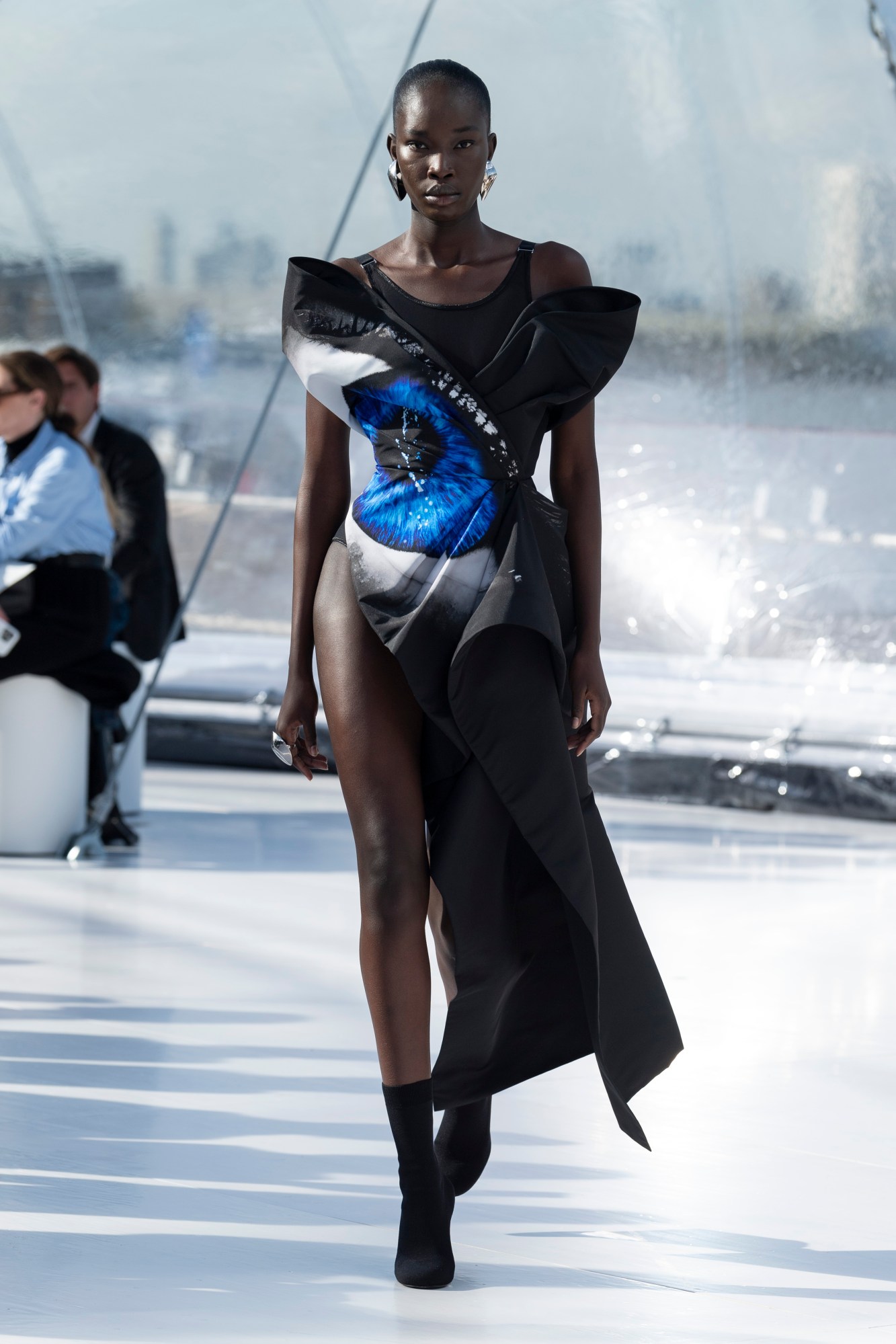
“It’s really about how you find humanity in these very difficult times that we live in,” explained Sarah after the show. “It is the most unique symbol of humanity — each one is like a fingerprint.” Explosions of dégradé raffia fringing echoed the mottled irises and extra-long lashes that opened the show, as did an entirely crystal-strewn bodysuit worn by Naomi Campbell. “It’s sort of about seeing things again,” she added. “Not walking around with your eyes shut, your eyes down. Just seeing each other, recognising each others’ humanity. Caring about each other.” It brought to mind that notion of not needing to get woke, if you stay woke. We all need to keep our eyes open to what’s going on in the world around us. “That played into it as well: how do you find human contact in the world we live in, in the world of technology?”
What followed was “dissected tailoring”, far more revealing than ever before in Sarah’s time at the helm of the house. Slick, whippet-thin tailoring was spliced away from the body, a black tuxedo jacket left entirely backless here, a le smoking jumpsuit slashed deep into the hip bones to reveal triangular flashes of bare skin. Perhaps most significant was the return of the bumster, the low-slung trousers that Lee McQueen first introduced to the canon of fashion history in 1993, and subsequently influenced the trend for bum-skipping pants for the subsequent decade. That same low-slung look has been percolating among a generation obsessed by late 90s/early 00s nostalgia.
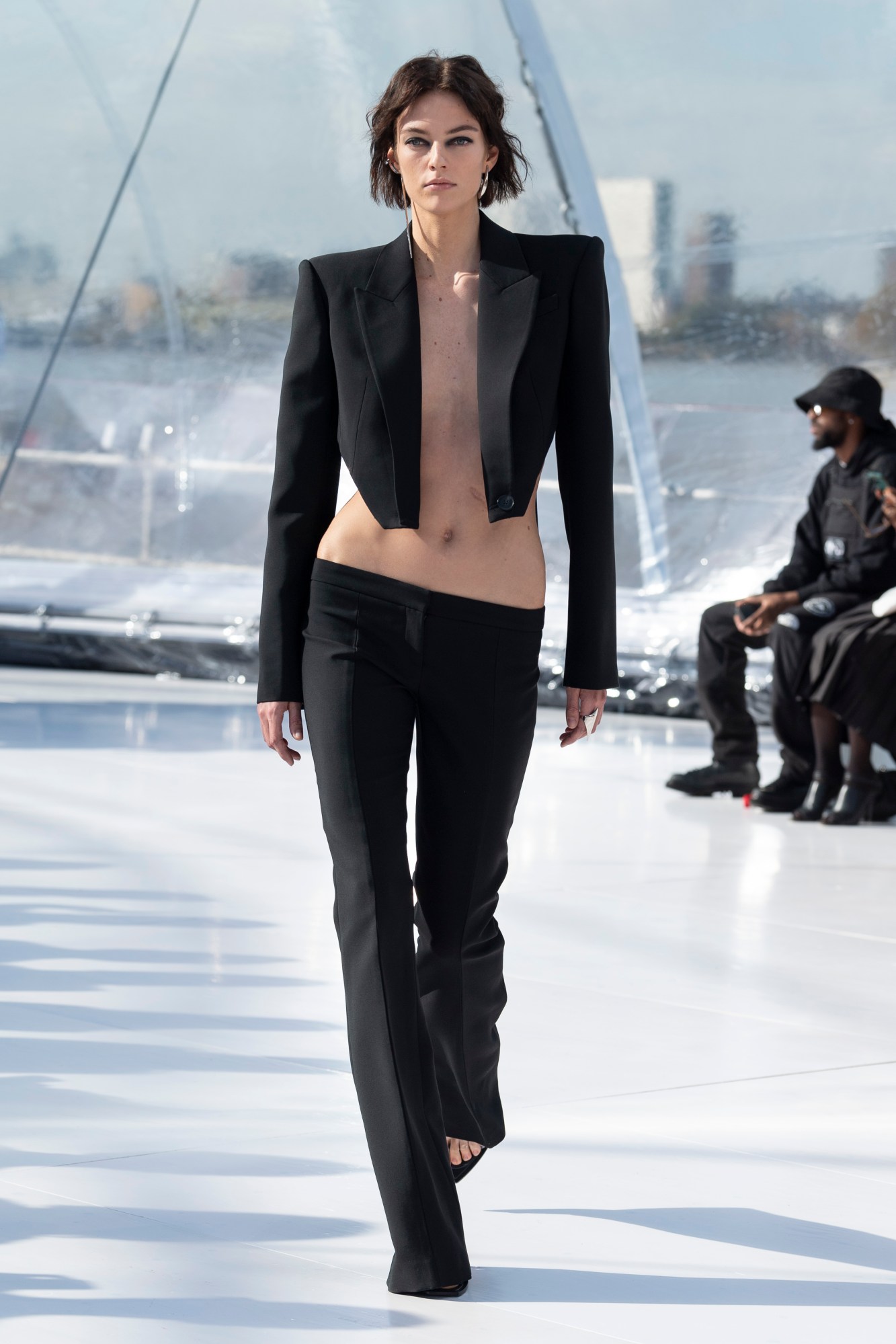
A Y2K revival? At Alexander McQueen? Sarah Burton is hardly a designer to succumb to the whims of seasonal trends. Rather, she revisited the archive in search of sensitivity. “It’s how would you adjust the proportion of a woman’s body? I feel like it’s always about a woman dressing for a woman,” she pointed out. “So it’s not a male gaze. I wanted to sort of embrace the female form; to sort of slice away in a very kind of dissected way.”
There was nature, too, as well as corporeal humanity. Sarah was looking at Hieronymus Bosch’s Garden of Earthly Delights, a triptych that is so ornate and intricate with its innumerable vignettes that there are social media accounts devoted to zooming into it and discovering new elements. Lee McQueen famously referenced it for his final, posthumous collection. Something about it felt right to revisit for Sarah, who zoomed in on details with allover satin stitch embroidery on cut-out bodysuits and slashed dresses.
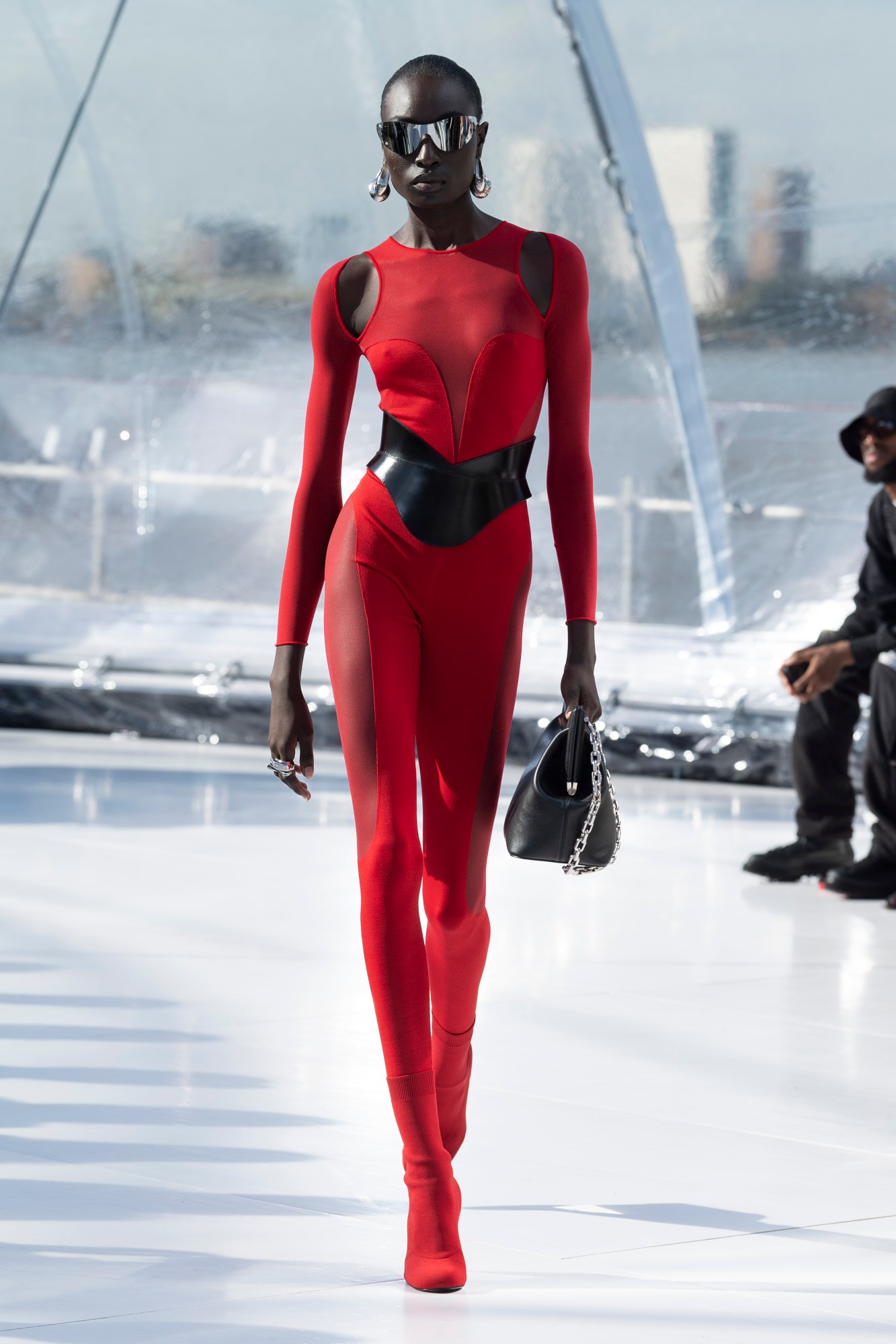
“It’s the times we’re living in now,” she explained. “It feels almost like we’re in another Dark Ages in many ways. It’s something we’ve always looked at, at McQueen. Life, death, destruction, beauty. It’s all there.” She was drawn to the details of the painting that depicted “what people do to each other” — much of which is horrific, and is still happening centuries later. “And then, the beauty right next to it. So there’s this strange juxtaposition of humanity behaving in one way, and nature in another.”
Somewhere within that there’s a vision of a wider contemporary landscape. At McQueen, everything is seen through the bubble of creativity: the romance of history and the harsh reality of the present, the beauty of nature and the challenges of technology, the darkness of humanity and the lightness of dressing-up. It’s those juxtapositions that really make up the codes of the house.

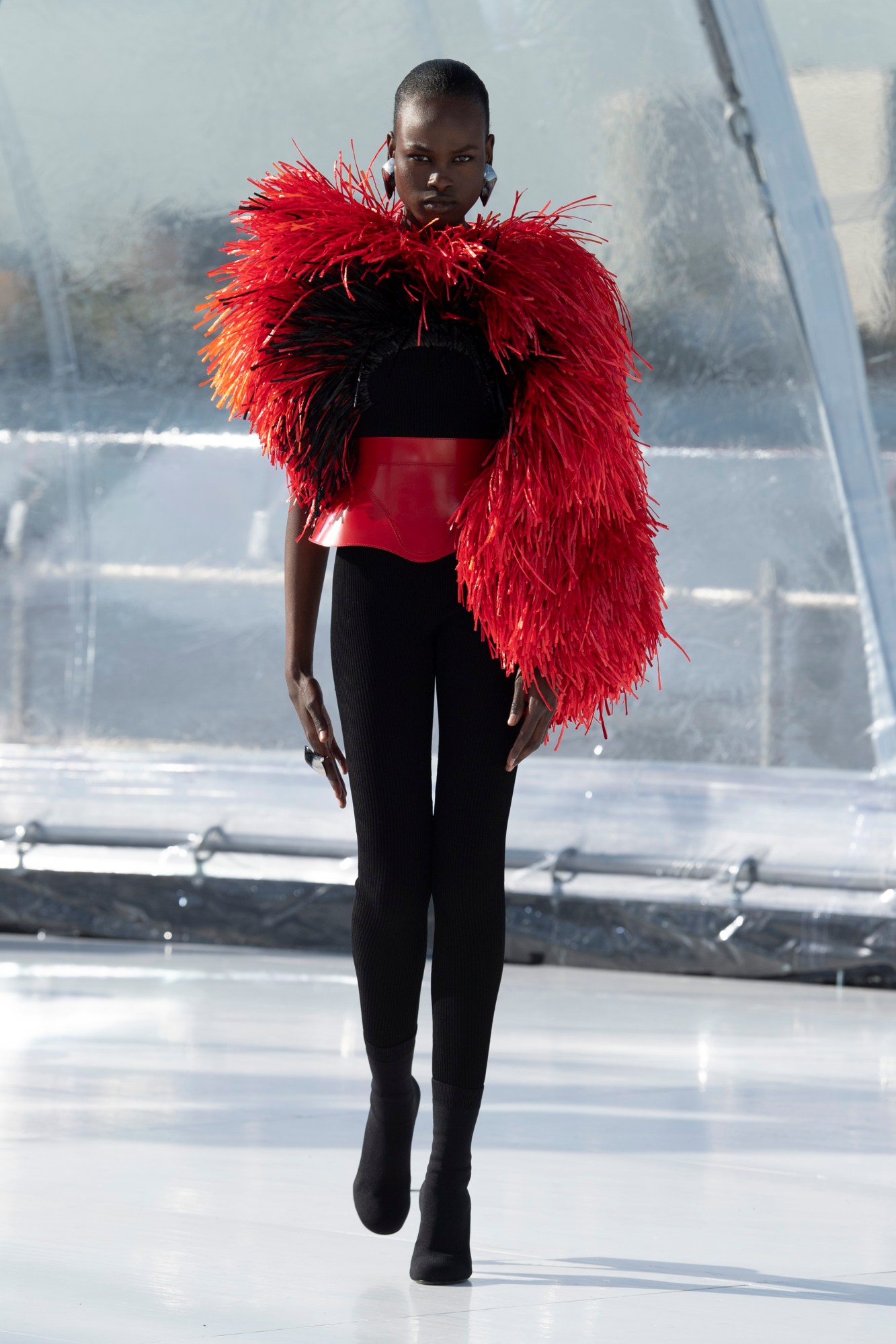
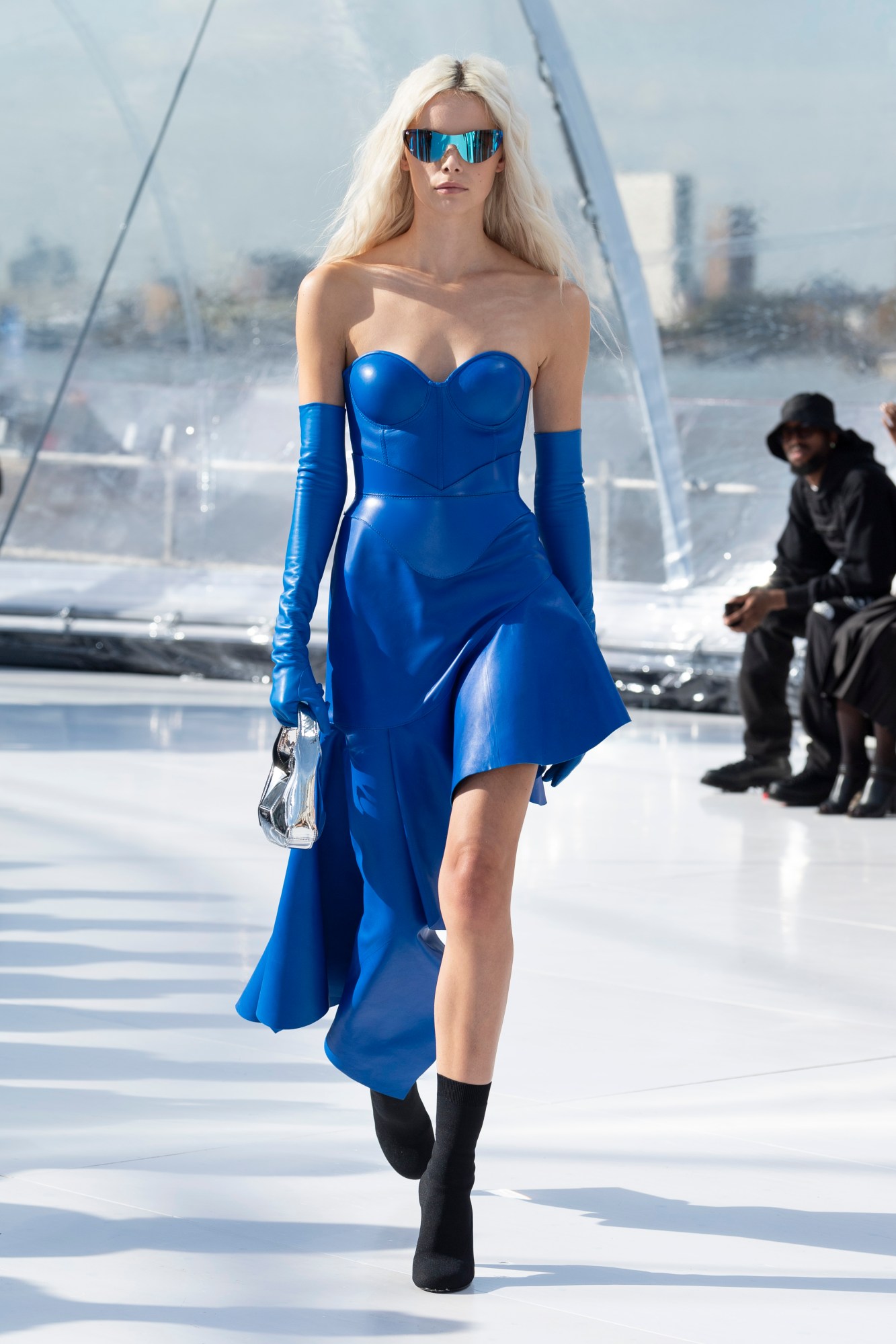
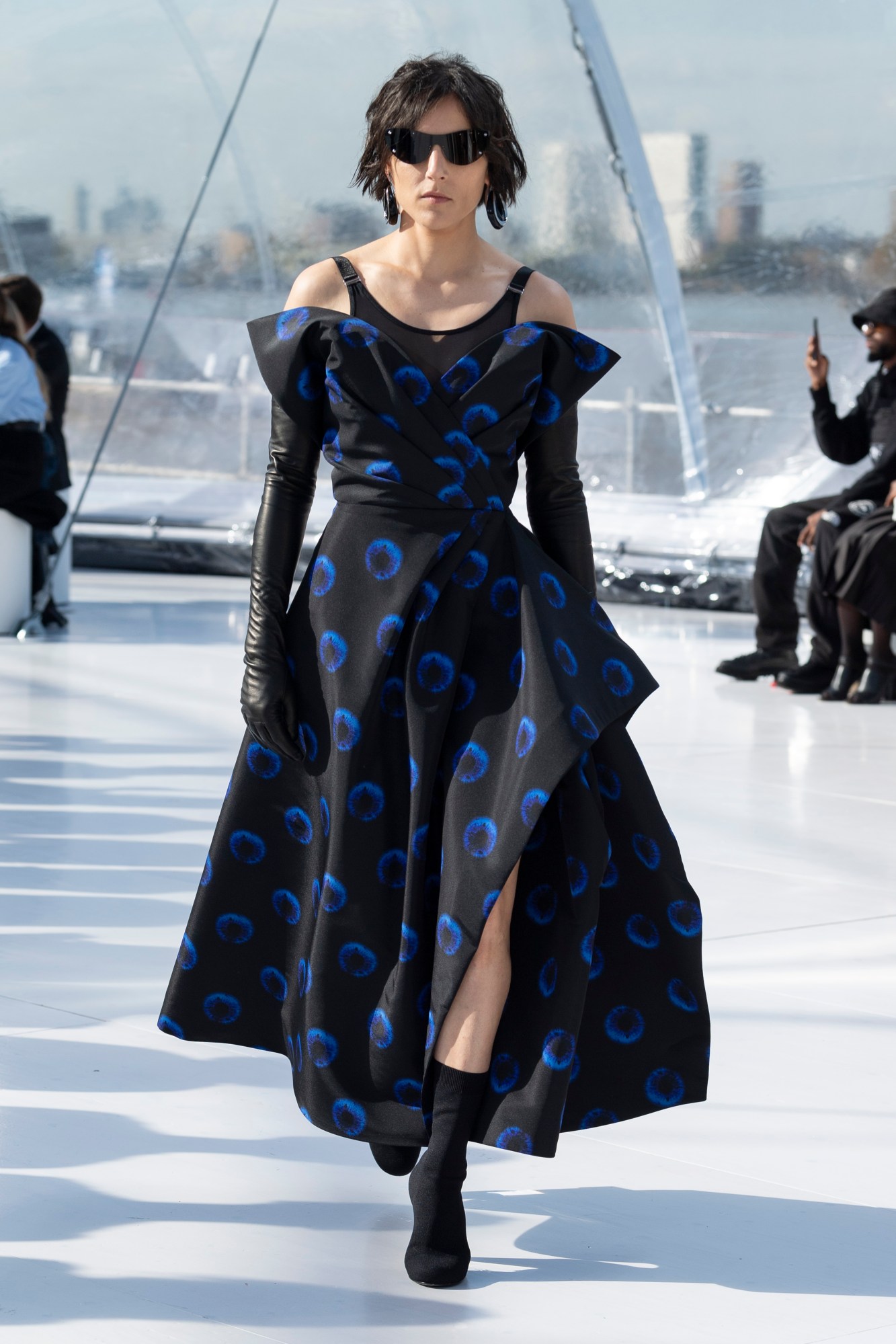
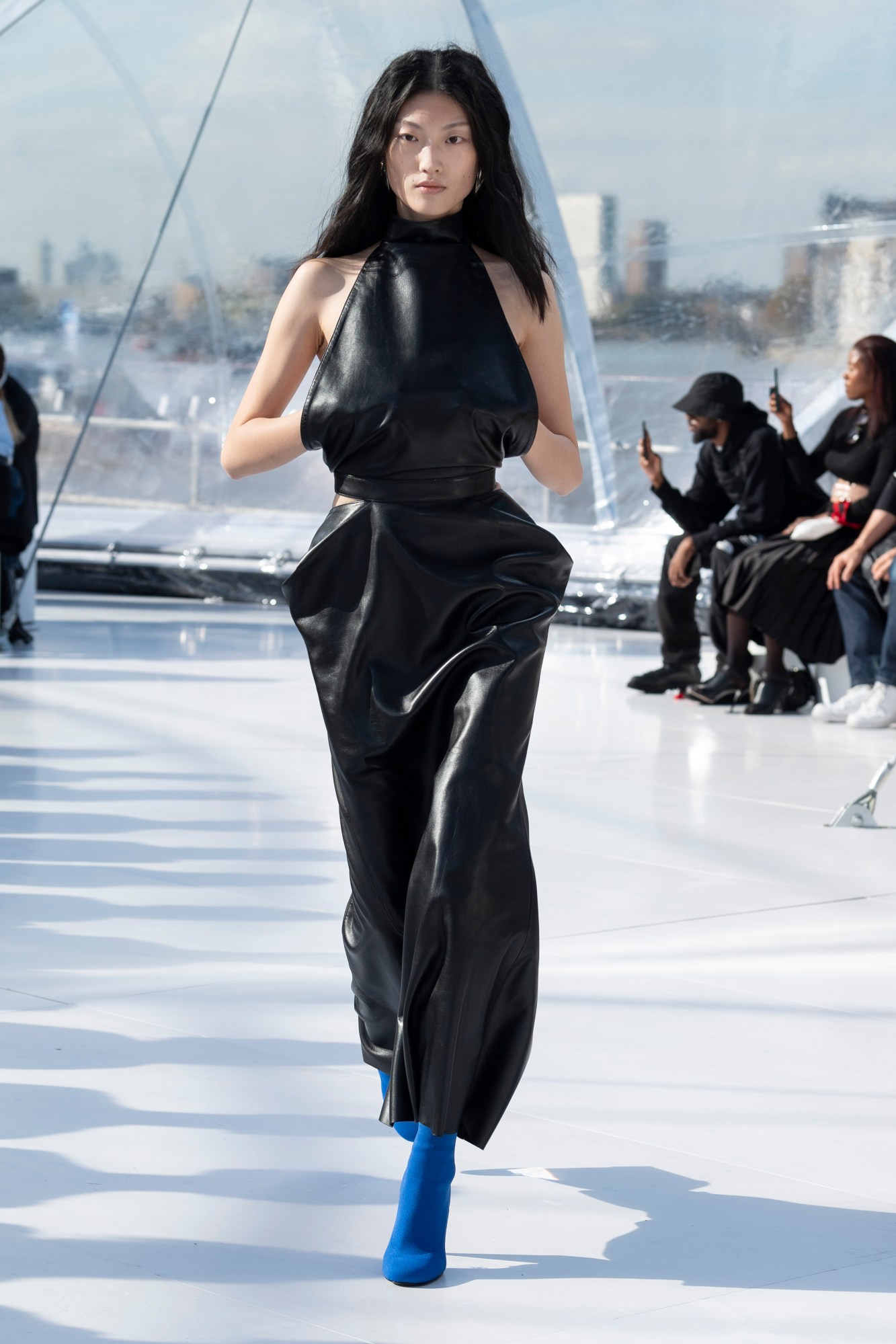
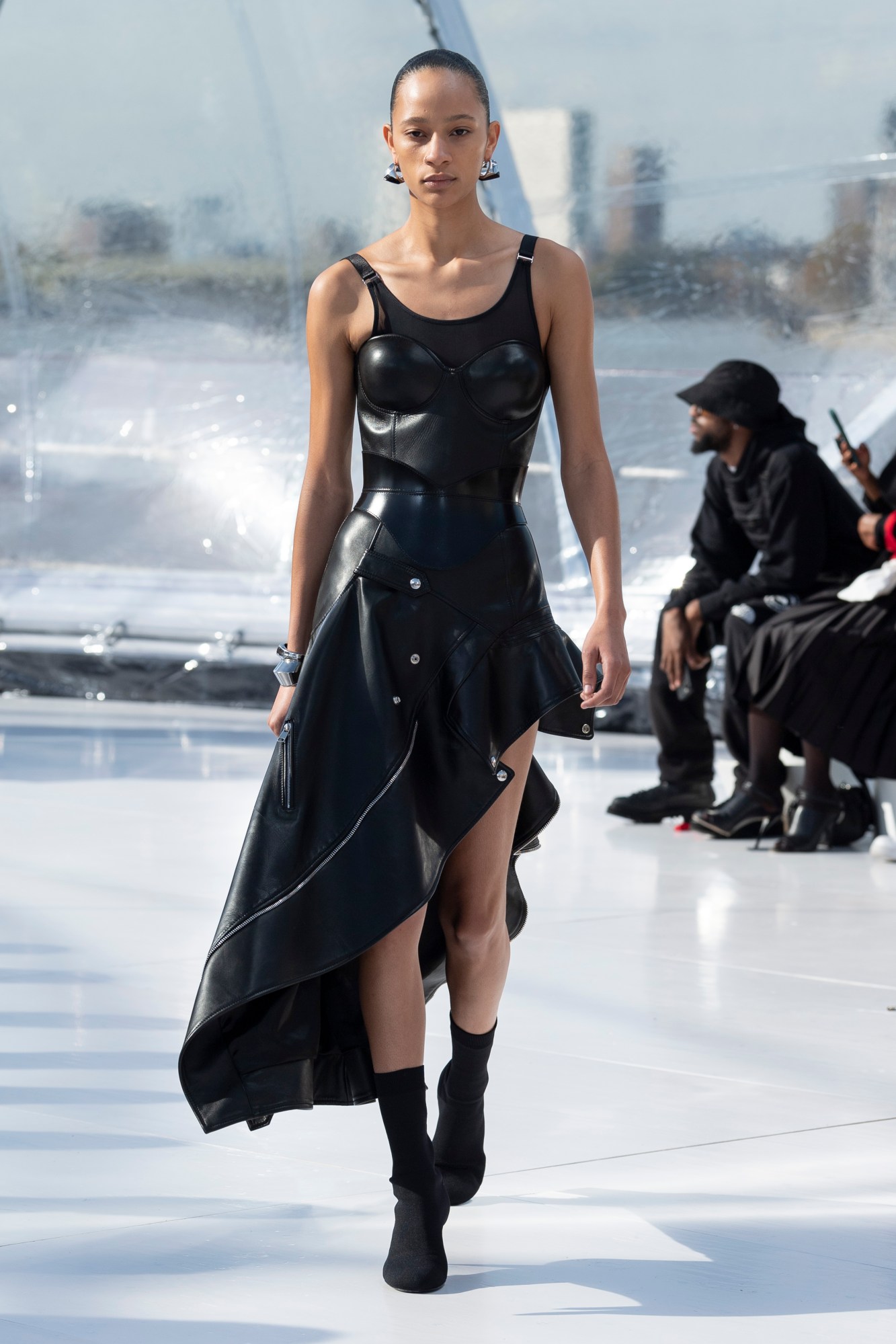
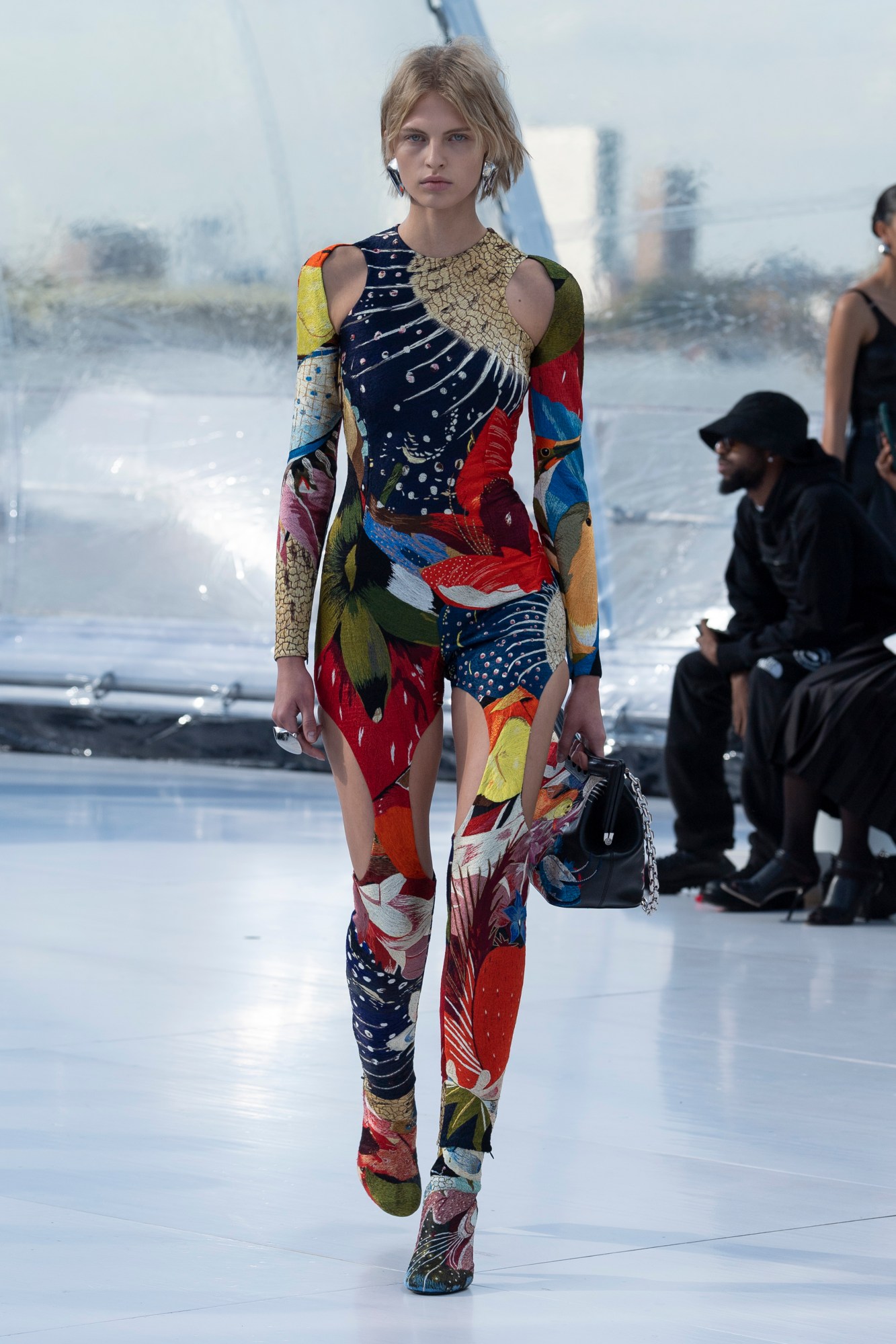
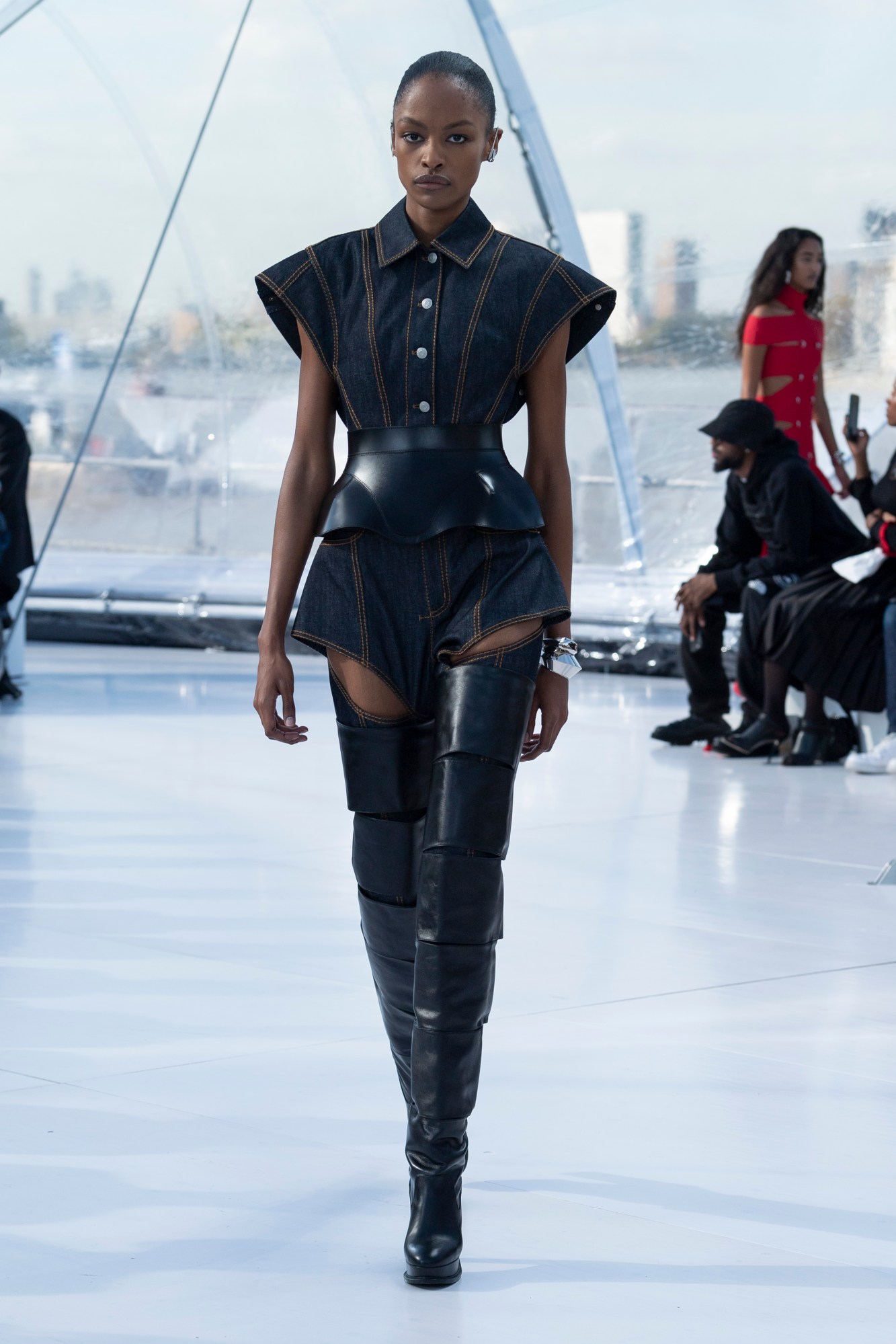
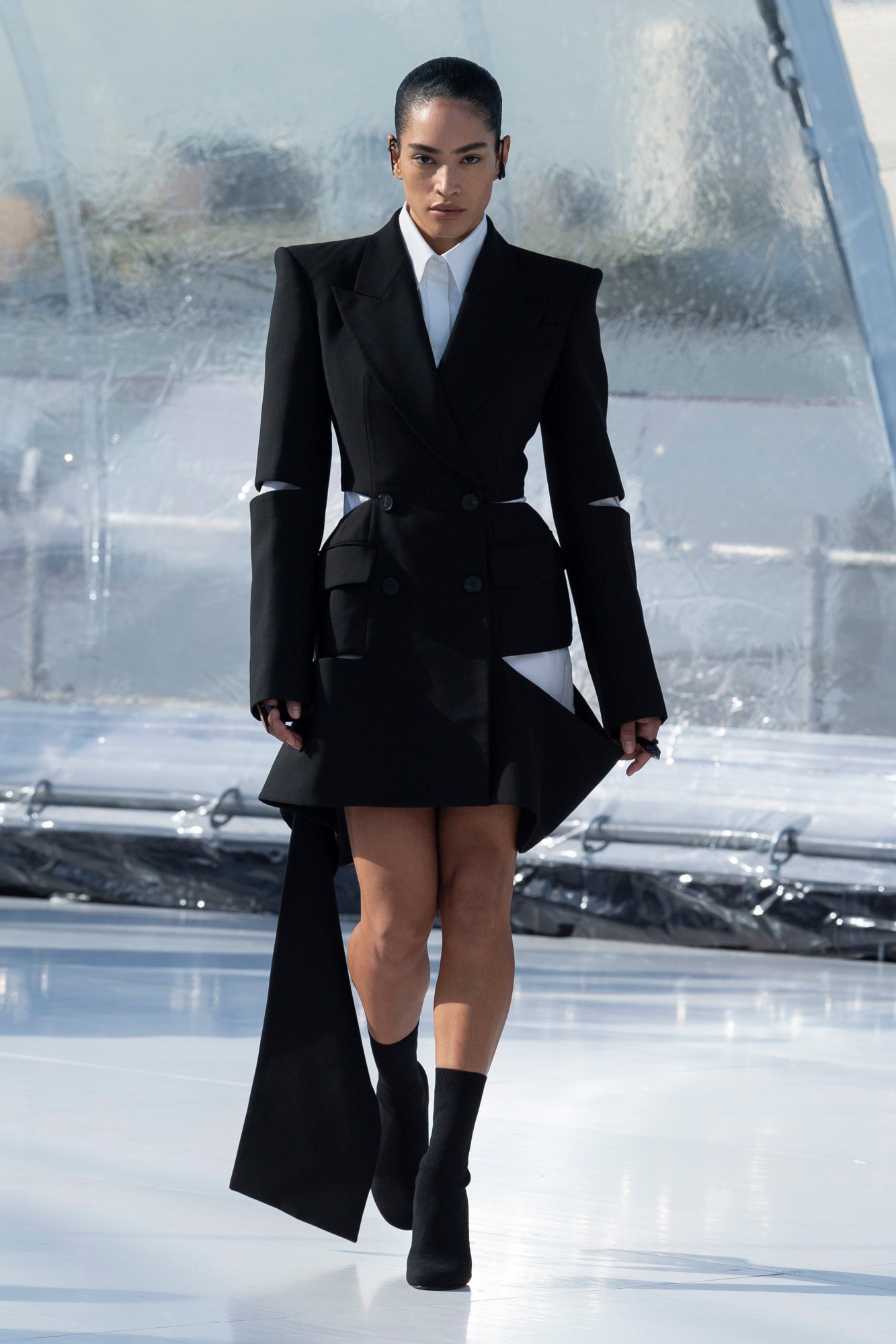


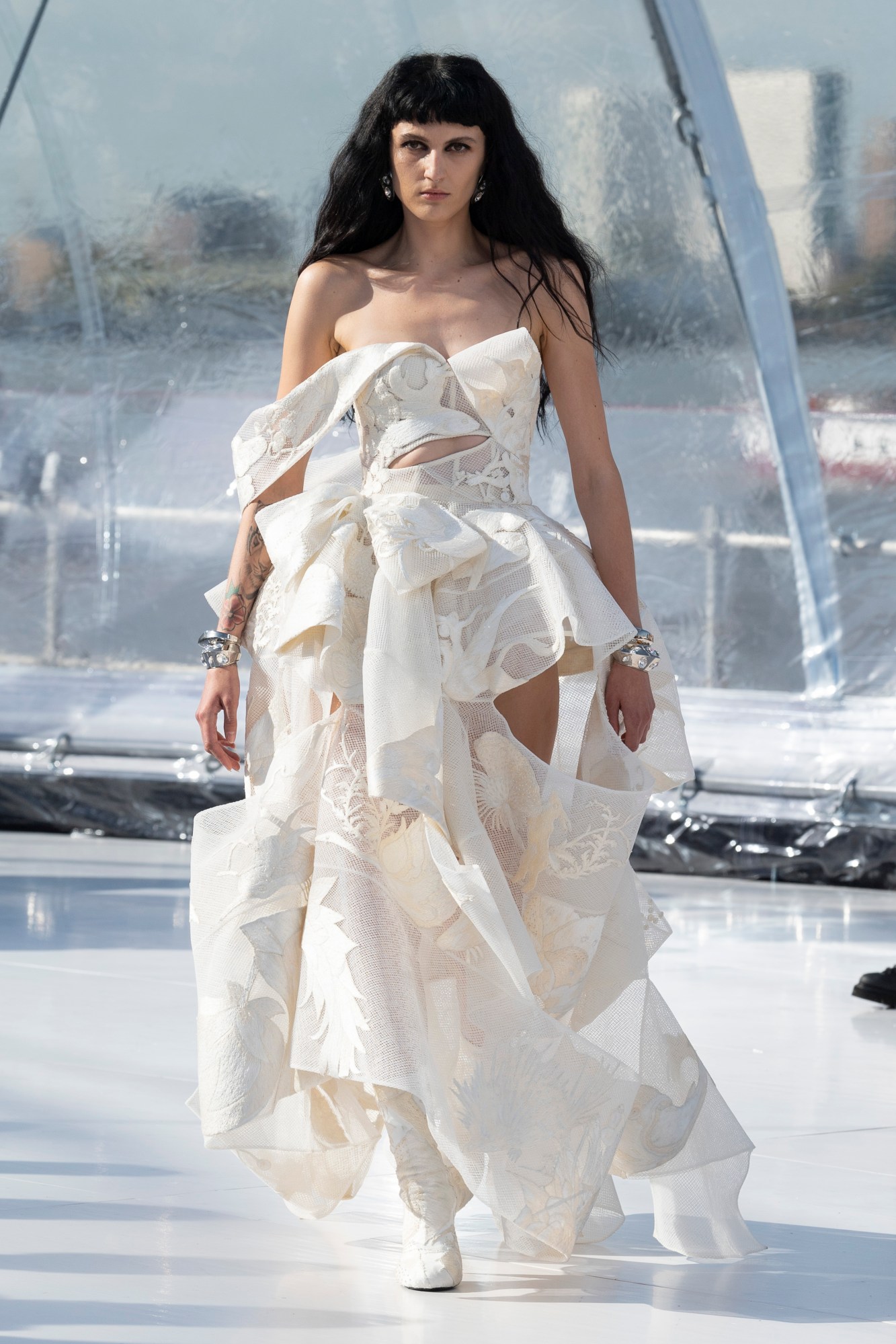
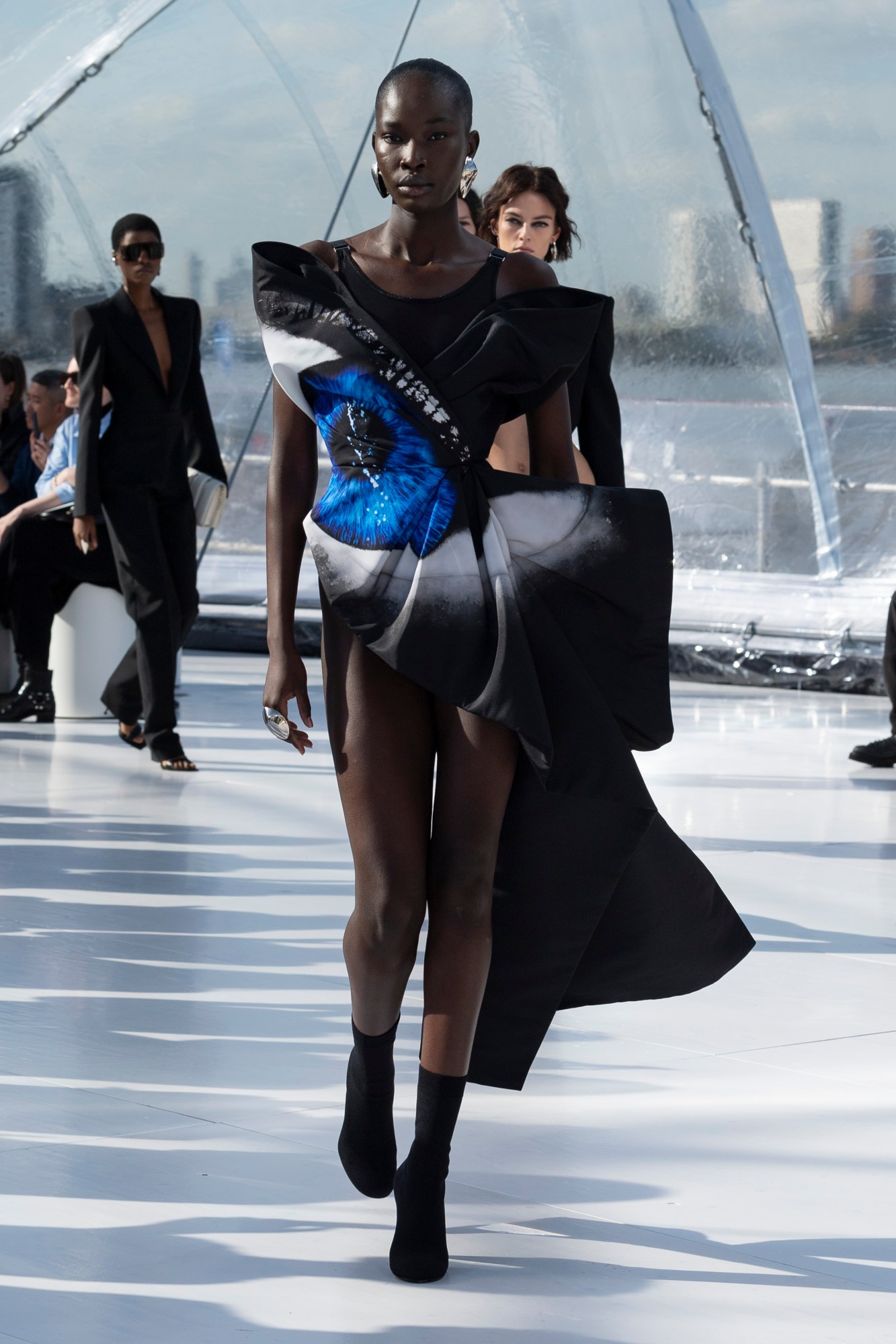
Credits
Images courtesy of Alexander McQueen
